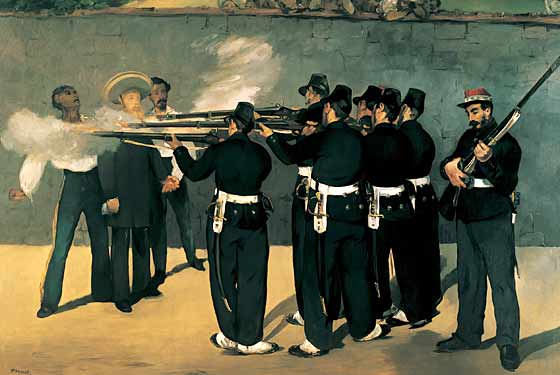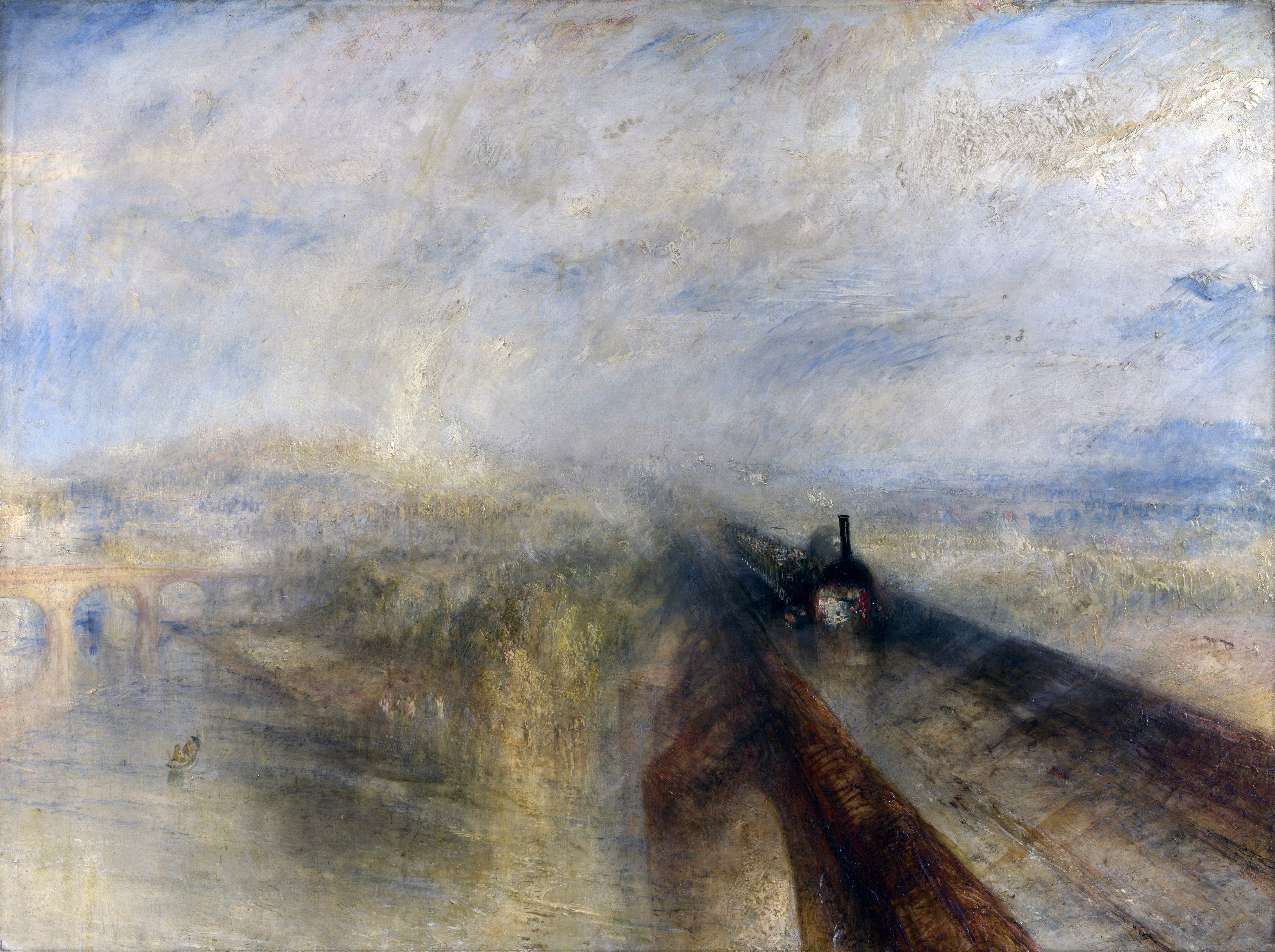For my project on causality I'm reading an essay called “Art-Critical Contradictions” by Brandon Cooke. He argues that there are real contradictions in aesthetic judgments. If you've been following this blog for a while you might figure out why I find that compelling.
It's a terrific essay. Cooke digs quite deeply in: he's not simply interested in the fact that people say “This is beautiful” about different things, or disagree about what is beautiful. The fact is, people offer totally contradictory interpretations of artworks. These interpretations are legitimated by (among other things) academic standing. So for instance we have the following interpretations of Manet's The Execution of Maximilian (above):
John House: “It was by its ambivalence, by the studied lack of dramatic rhetoric or moral signposting, that Manet’s purely ‘artistic’ [painting] could function politically. Its detachment and its open-endedness, a distinctively Parisian language of opposition to Napoleon’s empire, set up this image of Maximilian’s fate…as an icon of the perils of imperial and dynastic ambitions.”
Michael Fried: “[the painting is a field] with Manet himself—Manet as painter-beholder—at once everywhere and nowhere.. As a victim of the jury system…he belongs with Maximilian and the two generals. At the same time, as an aggressor against the public…he is aligned with the firing squad, which would give ironic force to the oft-repeated charge that his attempts to draw attention to himself at any cost were tantamount to discharging a pistol at the Salon.”
Georges Bataille: “A priori, death, coldly, methodically dealt out by a firing squad, is unfavorable to indifference: it’s a subject charged with meaning, giving rise to violent feelings, but Manet appears to have painted it as if insensible; the spectator follows it in that profound apathy. […]the text is effaced by the painting. And the meaning of the painting is not the text, but the effacement.”
Or, more sharply, between these interpretations of Turner's Rain, Steam and Speed:
John Gage: Turner celebrates “the Railway Age” and the affirmation of progress embodied by the locomotive “with an allegory developed from the Baroque, and in a style deriving from a study of Rembrandt.”
John McCoubrey: the painting is “Turner’s protest against the machine despoliation of the environment, in this case a lovely section of the Thames long dear to the painter.
Now someone like Stanley Fish solves this with the idea of interpretive communities. A judgment J can be true (P) in community X while not true (¬P) in community Y. But in the examples given above, there are no meaningful temporal or cultural gaps that would justify claiming that they come from different interpretive communities. Take that, relativists...
Furthermore, part of the fun of thinking about art criticism is balancing or comparing judgments that are from similar enough communities to make sense. We just wouldn't do this if everything was relative.
Thus there seem to be art-critical contradictions that are not explosive. The two interpretations of the Turner for instance contradict, and both are true; but this doesn't mean that this interpretation is also true:
Rain, Steam and Speed is about a tomato called Ronnie who juggles on Titan.
Now my question is why are dialetheias possible in art criticism? And my answer is, it has to be something to do with the object. And what is that? In a word, a profound ontological ambiguity. (Actually that's four words...)


Is this journal article a version of the same essay? Couldn't find a copy of the essay you mention, but did run across this.
ReplyDeleteYou wrote:
ReplyDeleteThus there seem to be art-critical contradictions that are not explosive. The two interpretations of the Turner for instance contradict, and both are true; but this doesn't mean that this interpretation is also true:
Rain, Steam and Speed is about a tomato called Ronnie who juggles on Titan.
Now my question is why are dialetheias possible in art criticism? And my answer is, it has to be something to do with the object. And what is that? In a word, a profound ontological ambiguity.
-----------------------------
Well, first: Rain, Steam and Speed is about a tomato called Ronnie who juggles on Titan.
Seriously. It's true. If your art criticism is of the surreal/dada/fluxist variety. You need to look at the works of Glen Baxter.
Art was eaten by the entertainment industry decades ago. Sometimes I'm surprised people still talk about it like it somehow matters or something.